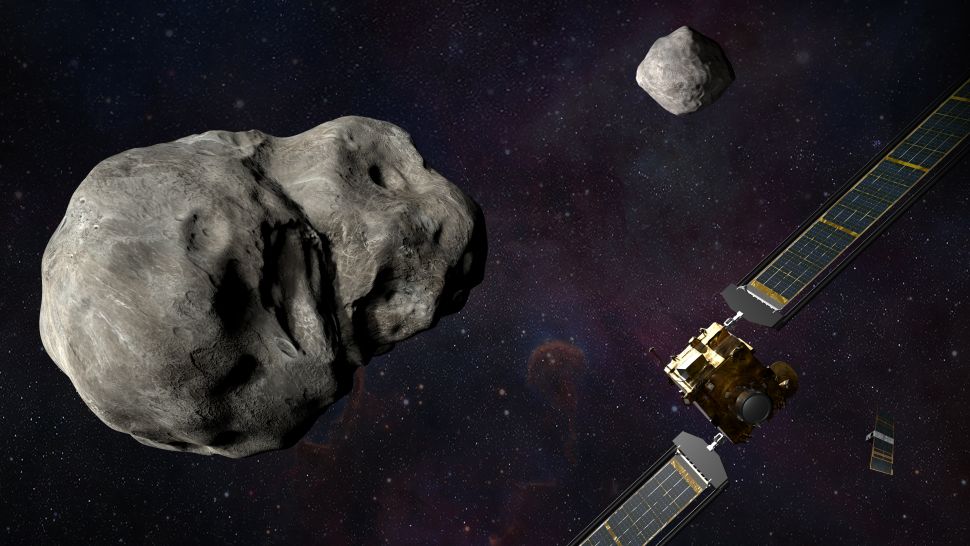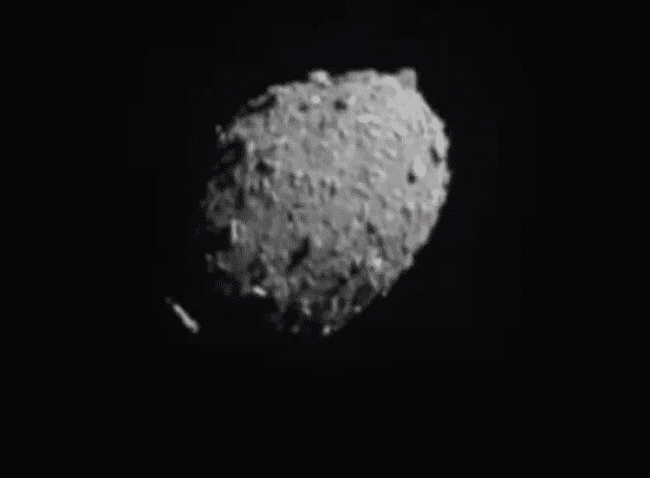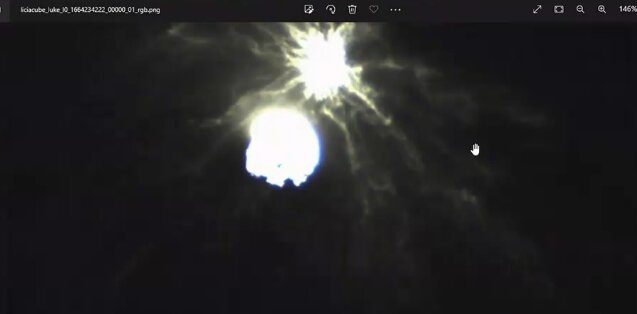There have long been concerns that the Earth could one day be threatened by the impact of a large object – usually an asteroid – from space. Scientists have mooted various ways of planetary defence ranging from nuclear missile strikes to asteroid deflection techniques.
The latter reason lay behind NASA’s launch of its US$330 million DART – Double Asteroid Redirection Test – in November of last year. The 500 kg DART spacecraft then took a 10-month voyage to the “asteroid moon” Dimorphos, which orbits another asteroid Didymos. The plan was that the spacecraft would crash into Dimorphos at a closing velocity of circa 6.5 km/s. The DART’s mass is miniscule relative to the 1 million metric ton object it was due to strike, but combined with its very high velocity, it was expected to transfer enough momentum to change the orbital trajectory of the Dimorphos body.
After a successful approach, DART made impact with Dimorphos at 2314 GMT on 26 September 2022.

Artist’s impression of DART approaching asteroid before strike. Courtesy: NASA/Johns Hopkins-APL Steve Gribben
Images of the asteroid getting larger and larger were received to cheers at Johns Hopkins University Applied Physics Laboratory (JHU-APL), which built and controlled the spacecraft on behalf of NASA. The sounds ceased on impact.
Telescopes on Earth managed to observe the event. Images of the impact and its aftermath were also taken by another small spacecraft called LICIACube (released on 11 September).
NASA will be calculating Dimorphos’s new orbit relative to its initial orbit over the next couple of months. By measuring how long it takes for the 160 m Dimorphos to disappear behind its “home asteroid”, the 780 m diameter Didymos, when viewed by telescopes on Earth, its new orbital period can be calculated. The hope is that the resulting very slight change in velocity, in the order of 1 or 2 mms per second, will be enough to change the orbital period of Dimorphos around Didymos by about 1-2 per cent.
Comment by David Todd: As we have noted before, if this experiment works, the technology will provide humankind with the means to potentially save the planet. There is one downside, however: the technology needs plenty of notice and it is estimated that only about half of the Earth-threatening objects of this size or bigger have been tracked and traced by astronomers – an effort further complicated by increasing “astronomical pollution” caused by satellite constellations such as Starlink, OneWeb, etc. In other words, a small asteroid may be able to “sneak up” on Earth with little notice. Thus, it might be wise to work on other last-ditch ways of saving the Earth. These have appeared in Hollywood disaster movies and usually involve attempts at nuclear destruction, either by astronaut-placed charges, or via nuclear missiles.
Post Script: China is planning a similar asteroid deflection mission. That has a slightly higher risk to Earth in that it does not involve an asteroid in a closed remote system like Dimophos and Didymos. Instead, it will attempt to deflect an actual near-Earth asteroid.









